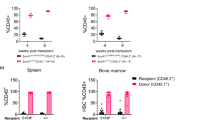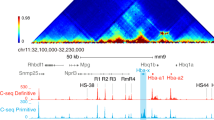Abstract
IT has recently been shown that the Rh activity of lyophilized human Rh-positive stroma could be abolished with certain sulphydryl reagents, that this could be prevented by the concurrent addition of excess thiol, and that the loss was reversible with one such reagent1. It was not established whether the antigenic activity of non-lyophilized erythrocytes shows such an effect. The resolution of this problem was hampered in the case of intact cells by the presence of soluble sulphydryl systems, including haemoglobin and glutathione2, and in the case of non-lyophilized stroma both by the occlusion of these soluble components, and by the difficulty of quantitation of wet stroma. The results of the present experiments suggest that the loss of Rh activity of lyophilized stroma brought about by sulphydryl reagents is equally true of stroma which has not been lyophilized.
This is a preview of subscription content, access via your institution
Access options
Subscribe to this journal
Receive 51 print issues and online access
$199.00 per year
only $3.90 per issue
Buy this article
- Purchase on SpringerLink
- Instant access to full article PDF
Prices may be subject to local taxes which are calculated during checkout
Similar content being viewed by others
References
Green, F. A., Vox Sang., 10, 32 (1965).
Kasbekar, D. K., and Sreenivasan, A., Biochem. J., 72, 389 (1959).
Green, F. A. (unpublished observations).
Mollison, P. L., and Sloviter, H. A., Lancet, ii, 862 (1951).
Author information
Authors and Affiliations
Rights and permissions
About this article
Cite this article
GREEN, F. Sulphydryl Reagents and Rh Activity of Erythrocyte Stroma. Nature 211, 852 (1966). https://doi.org/10.1038/211852a0
Issue date:
DOI: https://doi.org/10.1038/211852a0
This article is cited by
-
Molecular characterization of the rh-like locus and gene transcripts from the rhesus monkey (Macaca mulatta)
Journal of Molecular Evolution (1994)



